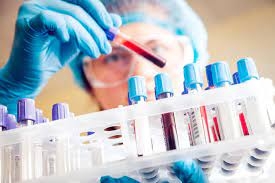The Core Pathways of Modern Pharmaceutical Formulation Development: Technological Innovation and Precision Solutions

As the global pharmaceutical industry transitions into a new era of innovation and precision medicine, the significance of Formulation Development has become increasingly prominent. It not only relates to the safety, efficacy, and stability of drugs but also serves as the critical step that bridges the gap between the laboratory and the clinical and commercial stages. With the continuous evolution of advanced formulation technologies such as Novel Drug Delivery Systems, Nanoparticle Development, and Microencapsulation, modern pharmaceutical companies are leveraging personalized, systematic Pharmaceutical Formulations to optimize drug performance and meet the diverse clinical needs of patients.
1. From API to Formulation: The Bridge of Drug Development
Active Pharmaceutical Ingredients (APIs) are the core components of any drug. However, many new APIs suffer from poor water solubility and stability, making them difficult to apply directly in clinical settings. This is where formulation development technology becomes essential, as it combines the API with suitable Pharmaceutical Excipients to create stable, absorbable, and patient-compliant dosage forms.
Common formulation types include:
l Semisolid Formulations: Such as ointments, gels, and creams, which are used for topical treatments.
l Liquid Dosage Forms: Such as oral solutions and suspensions, suitable for children and patients who have difficulty swallowing.
l Injectable Dosage Forms: Including water-based injections and lyophilized powder injections, widely used in vaccines and biologics.
l Lyophilized Formulations: Freeze-dried formulations that enhance the stability of drugs, making them easier to transport and store.
2. Solving Poor Solubility and Low Bioavailability
Over 40% of new chemical entities face issues with poor water solubility, which directly affects their absorption rate and bioavailability. As a result, Solubility Improvement and Bioavailability Enhancement are two critical areas of focus in formulation development.
Key technologies include:
l Nanoparticle Development: Reducing the particle size of the API to the nanoscale to effectively increase dissolution rate and enhance absorption in the body.
l Solid Dispersion Technology: Dispersing the API within a polymer excipient to improve its thermodynamic stability and dissolution behavior.
l Microencapsulation: Encapsulation techniques that control the release rate of the API, which can be used for sustained release, controlled release, and targeted release strategies.
l Choosing the right Pharmaceutical Excipients, such as surfactants, solubilizers, and permeation enhancers.
These technologies have significantly advanced the clinical application of poorly soluble drugs, laying the foundation for the development of advanced drug delivery systems.
3. The Development of Novel Drug Delivery Systems
In recent years, Drug Delivery Systems (DDS) have become a central focus in pharmaceutical research. By designing precise, efficient drug delivery systems, pharmaceutical companies can achieve better controlled release, targeted therapy, or cross biological barriers.
Novel Drug Delivery Systems include:
l Liposomes and Nanoliposomes: Widely applied in delivering anticancer agents and RNA-based drugs.
l Biodegradable Polymer Microspheres/Nanoparticles: Extensively used for controlled release injectable formulations.
l Gastro-floating Systems and Colonic Delivery Systems: Improving drug release and absorption in specific areas of the gastrointestinal tract.
l Smart Responsive Carriers: Systems that are sensitive to pH, temperature, or enzymes, suitable for personalized precision therapy.
These innovative systems not only improve therapeutic efficacy but also significantly reduce side effects, improving patient compliance, making them a key focus in both current and future formulation development.
4. Analysis and Validation in the Formulation Development Process
Throughout the Formulation Development process, Pharmaceutical Analysis provides scientific validation and quality assurance. Its key elements include:
l Physicochemical Testing: Including analyses of the API’s solubility, melting point, polymorphism, particle size, and more.
l In Vitro Release Studies: Evaluating whether the dosage form design meets the controlled or sustained release requirements.
l Stability Studies: Determining the shelf life and degradation trends of the formulation under different storage conditions.
l Bioequivalence (BE) Studies: When necessary, conducting in vivo pharmacokinetic (PK) and pharmacodynamic (PD) evaluations.
Accurate analytical data not only guides formulation optimization but also serves as critical documentation during regulatory approval processes.
5. The Rise of CDMO and Customized Solutions
With the acceleration of new drug development, more and more companies are choosing to collaborate with Contract Pharmaceutical Services (CDMO), especially during the early-stage formulation development phase. These organizations provide professional CD Formulation Services, including:
l Formulation Screening and Optimization
l Small-scale and Pilot-scale Process Design
l IND/NDA Documentation Preparation and Regulatory Support
l GMP-grade Sample Production
At the same time, in response to specific project needs, many CDMOs also offer Custom Drug Formulation Solutions, such as specialized dosage forms for rare diseases, colonic-targeted formulations, and pediatric-friendly oral liquids, significantly improving drug development efficiency and the likelihood of successful market entry.
Conclusion
Pharmaceutical formulation development has evolved from simply selecting dosage forms to becoming a comprehensive, multi-technology-driven engineering science. From the foundational improvement of API solubility to the complex construction of nanoparticle delivery systems, and the clinical translation of lyophilized formulations and smart-controlled release technologies, the entire process requires a solid pharmaceutical foundation, advanced analytical techniques, and effective industry collaboration.
Looking ahead, as personalized medicine and biotech drugs continue to develop rapidly, formulation development will continue to progress toward more "precise, safe, and intelligent" solutions, driving the global pharmaceutical industry to new heights.
- Art
- Causes
- Crafts
- Dance
- Drinks
- Film
- Fitness
- Food
- Spellen
- Gardening
- Health
- Home
- Literature
- Music
- Networking
- Other
- Party
- Religion
- Shopping
- Sports
- Theater
- Wellness


